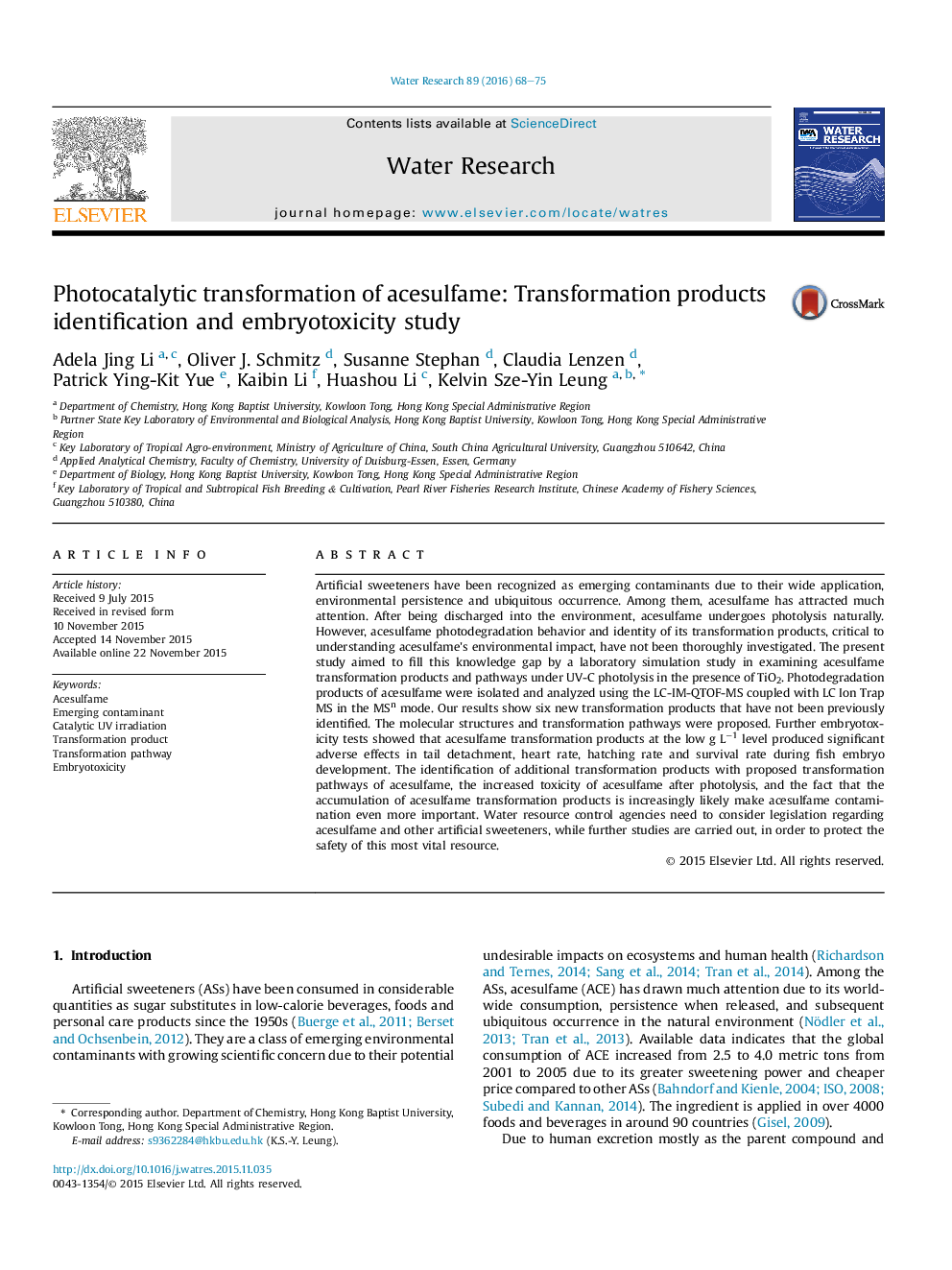| Article ID | Journal | Published Year | Pages | File Type |
|---|---|---|---|---|
| 4481023 | Water Research | 2016 | 8 Pages |
•Acesulfame undergoes photocatalytic transformation upon UV-C irradiation.•Six additional transformation products of acesulfame are identified.•Hydrolysis and oxidation are proposed to be the two main degradation mechanisms.•Transformation products in mixture produce adverse effects in fish embryo development.
Artificial sweeteners have been recognized as emerging contaminants due to their wide application, environmental persistence and ubiquitous occurrence. Among them, acesulfame has attracted much attention. After being discharged into the environment, acesulfame undergoes photolysis naturally. However, acesulfame photodegradation behavior and identity of its transformation products, critical to understanding acesulfame's environmental impact, have not been thoroughly investigated. The present study aimed to fill this knowledge gap by a laboratory simulation study in examining acesulfame transformation products and pathways under UV-C photolysis in the presence of TiO2. Photodegradation products of acesulfame were isolated and analyzed using the LC-IM-QTOF-MS coupled with LC Ion Trap MS in the MSn mode. Our results show six new transformation products that have not been previously identified. The molecular structures and transformation pathways were proposed. Further embryotoxicity tests showed that acesulfame transformation products at the low g L−1 level produced significant adverse effects in tail detachment, heart rate, hatching rate and survival rate during fish embryo development. The identification of additional transformation products with proposed transformation pathways of acesulfame, the increased toxicity of acesulfame after photolysis, and the fact that the accumulation of acesulfame transformation products is increasingly likely make acesulfame contamination even more important. Water resource control agencies need to consider legislation regarding acesulfame and other artificial sweeteners, while further studies are carried out, in order to protect the safety of this most vital resource.
Graphical abstractFigure optionsDownload full-size imageDownload high-quality image (313 K)Download as PowerPoint slide
